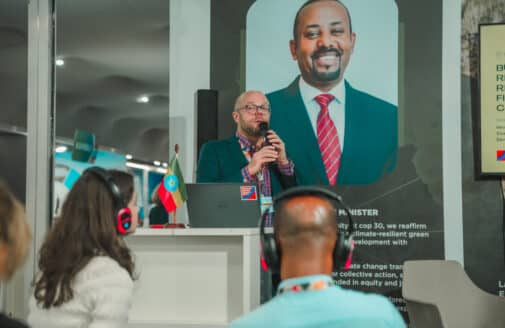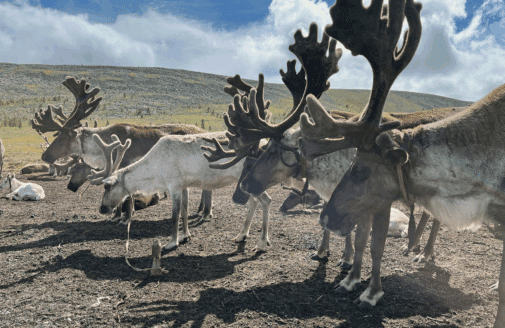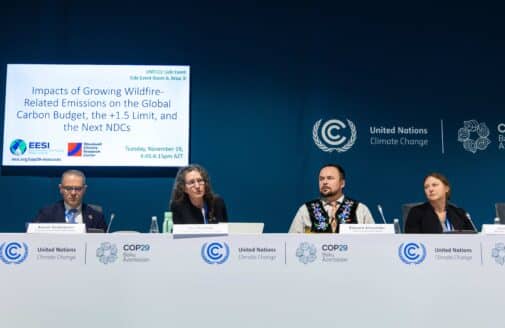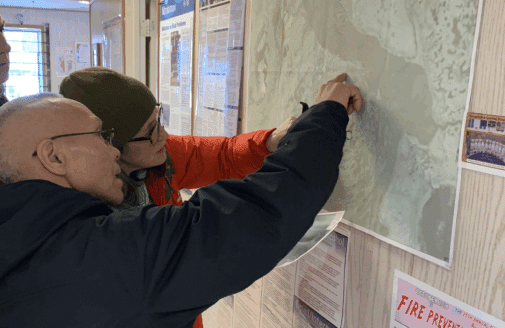New support for a prediction by George Woodwell
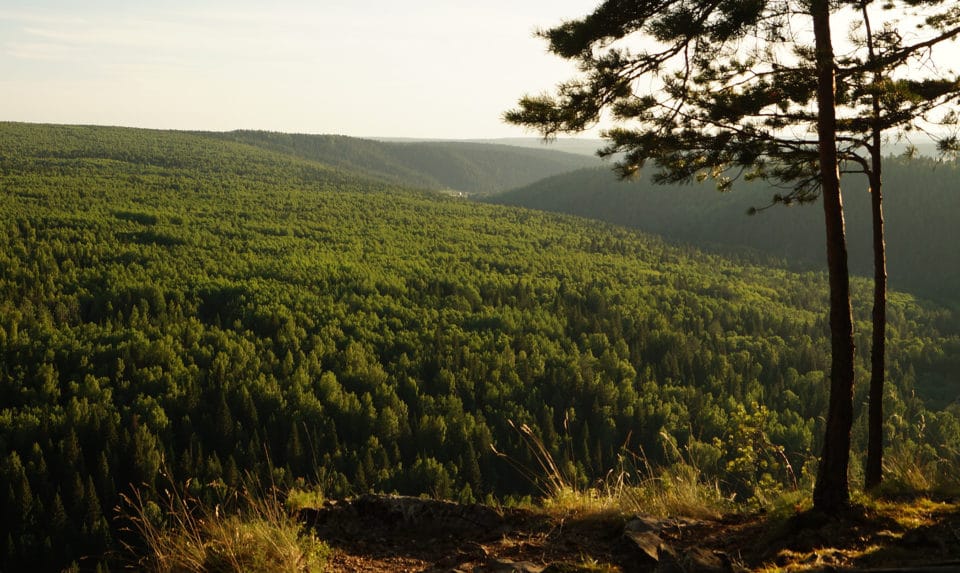
Biological processes are sensitive to temperature. That’s why we keep food in the refrigerator. That’s also why, as the planet warms, we worry about biological processes adding more CO2 to the atmosphere—above and beyond what humans are adding through fossil fuel use and deforestation.
George Woodwell warned about this biological amplification of climate change in his 1986 Senate testimony. One manifestation of this is greenhouse gas emissions from thawing permafrost. At the time of George’s testimony this idea was purely hypothetical, but work at the Center and elsewhere has shown that these emissions are now quite significant.
The problem is bigger and broader than that, however. I’ll quote George’s testimony at some length because, as usual, he states things very effectively:
“In the normal circumstance, over long periods of time, there is an approximate equivalency between processes that fix carbon dioxide out of the atmosphere, referred to as photosynthesis, and the processes that break down that fixed carbon, the carbon compounds of plants and soil, into carbon dioxide, heat, and water. That series of processes is respiration. The products of respiration, I emphasize, are carbon dioxide, heat, and water, the same products as those of fire. The products of photosynthesis are fixed carbon compounds. In the normal course, those two processes, photosynthesis and respiration, are approximately in balance over the Earth.
We think that is true, but there is no absolute proof of it. A change in the climate has the potential for changing the balance between photosynthesis and respiration over very large areas. The experience of ecologists who think about such topics leads them to believe that the factor which affects the balance most is temperature. … The best guess at the moment is that warming will affect respiration considerably more than it will affect photosynthesis. The effect will be the release of additional carbon dioxide, methane, and probably carbon monoxide from the vegetation and soils.
So here is a positive feedback system: a warming makes the problem with carbon dioxide and trace gases worse.”
Like greenhouse gas emissions from thawing permafrost, this more broad-based reduction in the ability of the biosphere to store carbon was just an idea in 1986. That’s still true, but a new paper co-authored by Christopher Schwalm, who leads Woodwell’s Risk Program, suggests that major changes may be coming soon.
Right now, land reservoirs like forests and soils remove from the atmosphere an amount of CO2 equivalent to about 25% of human CO2 emissions. Oceans do the same. In total, then, only about half of the CO2 which humans emit every year accumulates in the atmosphere. Nature kindly disposes of the rest. If this changes, that would result in an acceleration of global warming, just when we need urgently to slow it down. Research at Woodwell suggests that this is starting to happen, via emissions from permafrost. Schwalm’s work suggests that, on top of this, land may soon completely stop removing carbon from the atmosphere, and instead become a source.
If this is true, it is terrible news for humanity. It would make it much more difficult to meet the internationally agreed-upon goal of limiting warming to 1.5 or 2°C.
What is even more concerning is that these “carbon cycle feedbacks” are not represented in models and so are not part of humanity’s plans for controlling climate change. Specifically, these effects are not considered in emissions scenarios which limit global warming to 1.5 or 2°C, or in national commitments as part of the Paris agreement. This means that limiting global warming to a tolerable level may be much more difficult than is widely thought. That’s not welcome news, of course, but if it’s true we need to know it.
Worst of all, it is conceivable that these biotic emissions of carbon may become strongly self-reinforcing, resulting in out-of-control global warming—a loss of control of our planetary destiny. That may sound like a science-fiction nightmare, but geological evidence suggests that this may have happened in the distant past.
These “carbon cycle feedbacks” are a major risk to the future of humanity, yet they get minimal attention in the scientific community and virtually no attention outside of it. A major focus of our work at Woodwell is to improve understanding of these issues, and also to give them more prominence in the policy world and in the public conversation.
One recent step in that direction is the release of five short videos about these and other climate feedbacks, featuring Woodwell scientists, including George himself. Created by Northern Lights Productions, these are available online, and were recently featured in a conversation including two Woodwell scientists, Greta Thunberg, and the Dalai Lama.
This new science reminds me that the more we learn about climate change, the worse it looks. It is also a reminder that, even though we already know that climate change is a problem and that we need to do a lot more to address it, it’s essential to continue research into what happens when we add greenhouse gases to the atmosphere. Only with that understanding can we begin to formulate and implement a viable plan to contain the threat.
Thanks as always for your interest and support.




